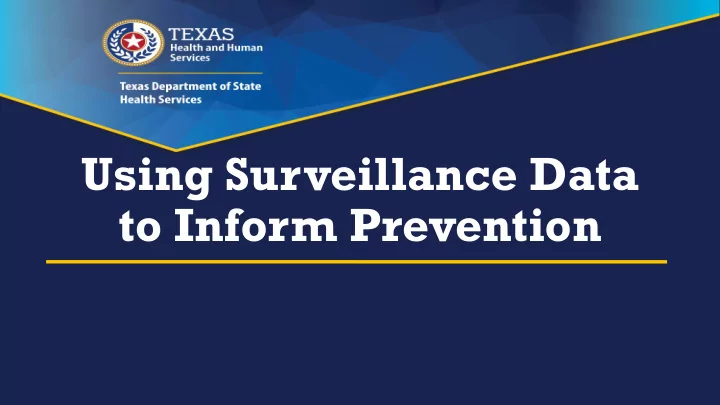

Using Surveillance Data to Inform Prevention
Molecular Epidemiology and HIV • HIV mutates over time • People living with HIV whose viral strains are genetically similar may be more closely related in transmission LA LA LA LA LA LA LA LA RA LA LA LA LA RA LA LA LA LA RA LA LA LA LA LA LA LA LA LA LA LA LA YA MA LA LA YA LA LA LA LA LA LA LA LA LA LA LA LA LA LA LA LA LA LA LA LA RA LA LA LA LA LA LA LA RA LA MA LA LA YA • Analysis: compare nucleotide sequences to determine relatedness ACCGGATAACGGTTATCCG ACCGGATAACGGTTATCCG AC T GGATAACGGTTATCCG ACCG A AT C ACGG AA ATCCG
Identifying Transmission Clusters Compare all pairs of sequences to Link drawn between 2 calculate genetic distance between sequences with them close genetic distance Identify pairs of sequences that are very closely related A B Connect all closely relate pairs to identify clusters Image courtesy of Joel Wertheim
Molecular Epidemiology and HIV • Analysis: compares nucleotide sequences to determine relatedness A B A B Person A infected person B Person B infected person A D A C B A B Person A infected person C, Persons D infected persons A and B who infected person B We can infer a direct OR indirect epidemiologic link; we cannot infer directionality
Interpreting Transmission Cluster Data ▪ Includes only those cases that have been diagnosed and have a sequence ▪ This represents a subset of the underlying sexual/risk network, which can also include: ▪ People who are diagnosed but do not have a sequence included in analysis ▪ Diagnosed, but never linked to care ▪ Linked to care, but haven’t received a genetic resistance test ▪ Sequence hasn’t been reported to health department ▪ People with undiagnosed infection ▪ HIV-negative contacts who may be at risk of acquiring HIV
Underlying Transmission Cluster and Risk Network HIV-infected, diagnosed, linked to care HIV-infected, diagnosed but no sequence available HIV-infected, not diagnosed HIV-uninfected, at risk of acquiring HIV
Current Residence of all Cluster cases: Confirmed, Probable, Possible and Negative High-Risk
Recommend
More recommend